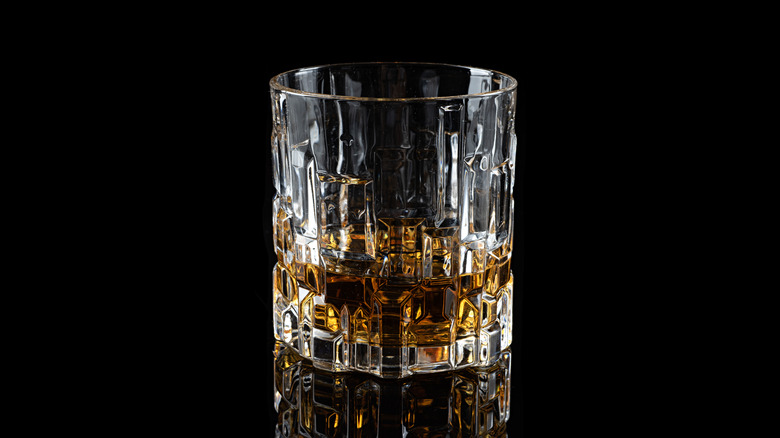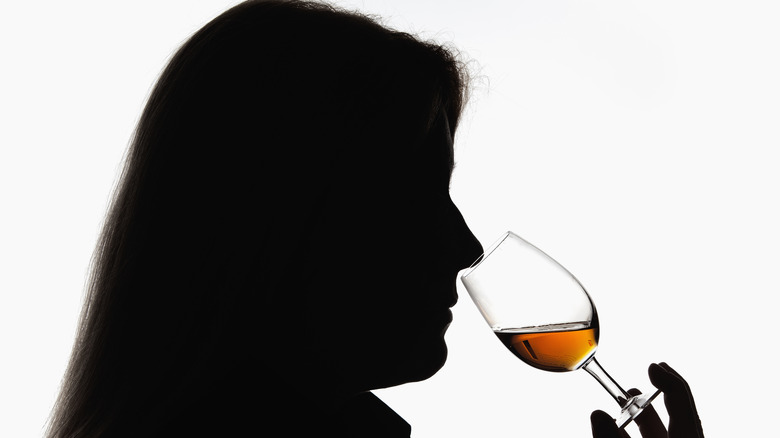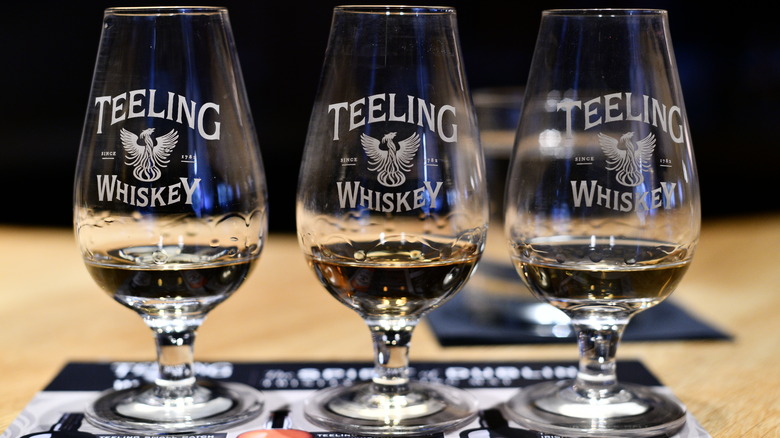Don't Ruin Your Whiskey Tasting Because Of This Sniffing Mistake
Whiskey tasting at a distillery is a fun, stress-free way to discover unique brands and flavors with friends or fellow enthusiasts. Your tour guide will walk you through the steps of using all your senses with purpose through the tasting journey, especially your sense of smell. Critically, don't stick your nose directly into the whiskey glass for a huge sniff during a tasting. Whiskey is a high-proof liquor, so inhaling deeply into the glass will actually give you less aroma — the alcohol within will immediately blow out your sense of smell. Without smell, it's impossible to taste the whiskey flavor, since those two senses should be working in tandem.
Whiskey scent profiles are incredibly diverse and help inform the taste of the drink. Using a more careful approach when smelling whiskey will enable the drinker to break through what may just smell like generic alcohol at first to bring out more depth in the whiskey's aroma. The Takeout interviewed Robyn Smith, PhD, founder of Los Angeles-based experimental rum distillery rum et al., about her approach to smelling spirits. She encouraged tasters to take it slow and go in with an open mind.
How to correctly smell whiskey
To properly experience a whiskey's aroma — or nose, as professional distillers call it — don't take huge sniffs right away. Smith told us, "When nosing whiskey, or any spirit for that matter, I ease my way in ... I start with shorter sniffs and then slowly elongate my sniffs to pick up more and more aromas. I'll also switch between nostrils by leaning the glass more towards one side of my nose and then the other. It sounds crazy, but I find that I pick out different aromas this way."
Whiskey presents a variety of aromas based on the grains used to create the initial mash for fermentation and distillation. It also takes on the scent properties of the wooden container in which the distilled whiskey is aged until ready for consumption. While whiskey can present floral, fruity, or smokey scents, among many others, Smith advised that when she smells whiskey, "I try not to look for any notes in particular but rather let the aromas present themselves."
Smith also suggested that the nosing process shouldn't necessarily be confined to just smell. She noted, "I'll also play around with opening my mouth while nosing, especially if I'm getting alcohol heat on the nose."
Why smelling slowly improves a whiskey tasting
During a whiskey tasting, you'll be walked through how to properly smell the samples provided before taking a drink. On a recent visit to the Teeling distillery in Dublin, Ireland, our tour guide advised us to experience the scent of the whiskey slowly, starting with short, precise smells in order to identify its nose. The guide then asked the tour group to identify what notes we smelled. The answers were quite varied — fruity and spicy for the single grain whiskey, vanilla and rum for the small batch variety, chocolate for the single malt.
Because we dedicated time to properly integrating the aromas of each whiskey, the scents we experienced informed the flavor of all three whiskeys once we drank them. The fruity single grain tasted smooth and almost effervescent; the smell of the small batch led to a classic whiskey flavor that would make a fantastic base for a whiskey cocktail; and the initial chocolate aroma of the single malt gave way to a punch of vibrant, oaky flavor.
While it may be tempting to take a big hearty sniff of the whiskey glass at a tasting, remember that doing so will only bring out a pungent alcohol smell that will ruin your olfactory sense for the rest of the event. Take your time, and you'll enjoy the full flavor profile of the whiskey with that first sip.


